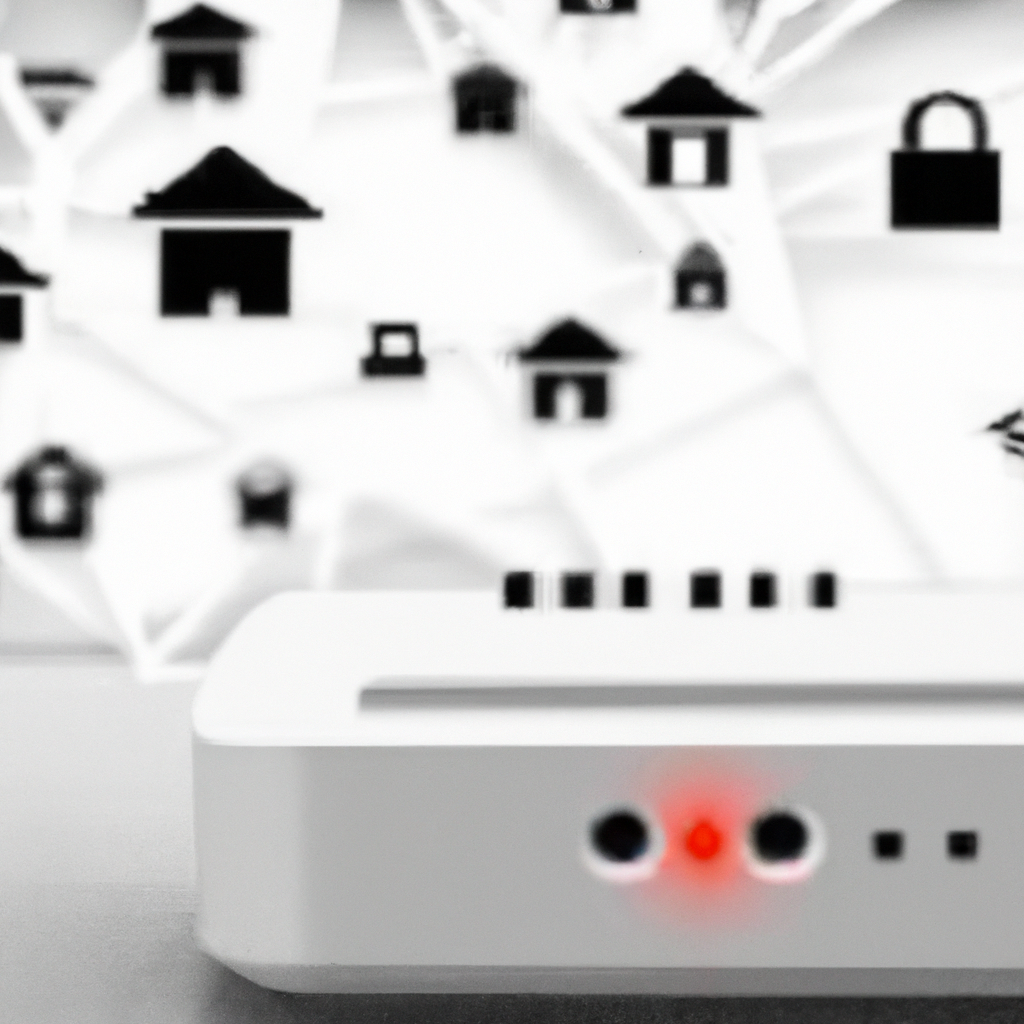So, you’ve been hearing a lot about smart homes lately, and you’re intrigued. You can’t help but wonder, what does it take to convert a traditional home into a smart home? Well, you’re in the right place. In this article, we’ll explore the prerequisites for transforming your humble abode into a cutting-edge smart home. From ensuring a stable internet connection to investing in compatible devices, we’ll guide you through the essential steps so you can make your home smarter than ever before.

Assessing the Existing Infrastructure
Evaluating the Electrical System
Before diving into the world of smart home technology, it is crucial to assess the existing electrical system of your home. Evaluate the capacity and condition of your electrical panel to ensure it can handle the additional load that smart devices may require. It may be necessary to upgrade your electrical system if it is outdated or insufficient.
Examining the Internet Connectivity
A stable and reliable internet connection is the backbone of any smart home. Take the time to examine your current internet service provider (ISP) and the speed of your internet connection. Smart devices, especially those that require constant internet connectivity, will heavily rely on a fast and uninterrupted connection. Consider upgrading your internet plan if necessary.
Reviewing the Network Coverage
Besides internet connectivity, it is essential to review the network coverage throughout your home. Assess whether certain areas experience weak Wi-Fi signals or dead zones. This information will aid in strategically placing routers or utilizing range extenders to ensure consistent connectivity throughout your smart home.
Assessing the Wi-Fi Strength
A strong Wi-Fi signal is crucial for smart devices to function optimally. Evaluate the strength and stability of your Wi-Fi network by checking signal strength in different parts of your home. If there are areas with weak signals, consider investing in mesh Wi-Fi systems or additional range extenders to improve coverage.
Analyzing the Security System
Take a closer look at your current security system and evaluate its compatibility with smart home technology. Determine whether it can integrate with smart devices or if an upgrade is necessary. Consider features like motion sensors, access control, and surveillance cameras that can be enhanced through smart home integration.
Considering the Heating and Cooling Systems
Assess the heating and cooling systems in your home to see if they are compatible with smart home technology. Smart thermostats can offer energy-saving benefits and increased control over your HVAC system. Ensure that your system is compatible with popular smart thermostat brands and research any required additional components for integration.
Ensuring Compatibility of Devices
Researching Smart Home Compatibility
One of the primary prerequisites for converting your traditional home into a smart home is to research the compatibility of devices. Different smart home ecosystems and brands may have specific compatibility requirements. Determine which devices are compatible with your chosen ecosystem to ensure seamless integration and easy control of your smart home devices.
Checking Device Integration
Consider the devices you currently own and evaluate their potential integration into a smart home. Smart TVs, speakers, locks, and even appliances can be integrated into a smart home ecosystem. Check if these devices are compatible or if you need to upgrade to smart-enabled versions for seamless integration and control.
Verifying Communication Protocols
Different smart devices use various communication protocols to interact with each other and the smart home ecosystem. Research popular communication protocols such as Zigbee, Z-Wave, or Wi-Fi and ensure that the devices you choose support these protocols. Compatibility in communication protocols will pave the way for smooth communication and interactions between devices.
Investigating Interoperability
When building a smart home, it is essential to investigate the interoperability of different devices and ecosystems. Ensure that the devices you choose can work together seamlessly. Check for compatibility with popular smart home platforms like Amazon Alexa, Google Assistant, or Apple HomeKit to ensure that your devices can be controlled through your preferred voice assistant or mobile app.
Considering Expansions and Upgrades
While considering compatibility, it is essential to think long-term and consider potential expansions and upgrades. Determine if the chosen ecosystem and devices have room for growth and integration of new technologies in the future. This future-proof approach ensures that your smart home can evolve and adapt to new innovations without significant disruptions or additional investments.
Planning for Automation
Understanding Smart Home Automation
A crucial step in converting your traditional home into a smart home is understanding smart home automation. Automation allows you to control various aspects of your home with minimal effort. Whether it’s adjusting the lighting, managing your HVAC system, or even controlling your entertainment setup, a well-planned automation system can provide convenience and enhanced living experiences.
Identifying Automation Needs
Identifying your automation needs is key to achieving the desired level of control and convenience. Consider the aspects of your home that would benefit from automation. This could include lighting, temperature control, security systems, or even entertainment devices. Understand which tasks or processes you would like to automate to create personalized routines and experiences.
Determining Control Options
Consider how you want to control your smart home devices. There are various control options available, including voice control through voice assistants like Amazon Alexa or Google Assistant, mobile apps, physical switches, and even automated routines. Determine which control options align with your lifestyle and preferences to ensure seamless and effortless control over your smart home.
Choosing a Smart Home Hub
A smart home hub serves as the central control point for your smart devices. It allows for easy management and coordination of different devices within your smart home ecosystem. Research different smart home hub options available in the market and select one that supports your chosen devices and offers the functionalities you desire.
Mapping Out Automation Routines
To maximize the benefits of automation, map out automation routines that align with your lifestyle and daily routines. Consider routines for waking up, leaving the home, arriving home, and going to bed. Automate tasks like adjusting the thermostat, turning on or off lights, locking doors, and playing your favorite music. Mapping out these routines ensures that your smart home system operates seamlessly and enhances your daily life.
Ensuring Data Privacy and Security
Examining Privacy Concerns
When entering the world of smart home technology, it is crucial to examine privacy concerns. Understand the data that smart devices collect and how it is used. Research the privacy policies of different manufacturers and choose devices that prioritize data privacy. Additionally, explore options to disable or limit data collection if privacy is a significant concern.
Reviewing Data Encryption
Data encryption is vital in securing the privacy of your smart home devices. Look for devices that utilize advanced encryption protocols to protect your data from unauthorized access. Encryption ensures that sensitive information transmitted between devices or stored in the cloud remains secure and cannot be easily compromised.
Considering Vulnerability Assessment
Regularly assess the vulnerability of your smart home devices and network. Stay updated with security patches and firmware updates released by manufacturers and ensure that your devices are running the latest versions. Additionally, consider conducting vulnerability assessments periodically to identify potential security loopholes and implement necessary measures to mitigate any risks.
Implementing Device Authentication
Device authentication is a crucial aspect of smart home security. Ensure that your devices support secure authentication mechanisms. Implement strong and unique passwords for each device, preferably using a password manager to avoid common security pitfalls. Consider enabling two-factor authentication for an added layer of security.
Setting up Network Security
Securing your home network is paramount to protect your smart devices from unauthorized access. Change the default network credentials and create strong, unique passwords for your Wi-Fi network. Enable network encryption protocols such as WPA2 or WPA3 to prevent unauthorized users from gaining access to your network. Regularly update your router’s firmware to address any security vulnerabilities.

Evaluating Power Management
Assessing Power Consumption
Power consumption is an essential consideration when converting your traditional home into a smart home. Smart devices, especially those that are always connected, can contribute to increased energy consumption. Assess the power requirements of your smart devices and consider energy-efficient options or automation routines to optimize power usage and minimize unnecessary energy consumption.
Optimizing Energy Efficiency
Smart home technology offers various energy-saving features and capabilities. Leverage these features to maximize energy efficiency in your smart home. Smart thermostats can learn your schedule and adjust temperature settings accordingly, while smart lighting can be programmed to turn off when not in use. Explore energy monitoring systems that provide insights into your energy usage and identify areas for improvement.
Planning for Battery Backup
Incorporating battery backup systems ensures uninterrupted operation during power outages. Consider investing in battery backup solutions for critical smart home devices like security systems, routers, and hubs. Backup power sources keep your devices online and maintain connectivity, allowing you to monitor and control your home even during emergency situations.
Considering Energy Monitoring Systems
Energy monitoring systems provide valuable insights into your energy consumption patterns. Consider installing energy monitoring devices that can track the usage of individual appliances and inform you of potential energy-saving opportunities. These systems provide detailed data that can help you make informed decisions regarding energy usage and optimize your smart home for efficiency.
Implementing Smart Power Grid Solutions
Smart power grid solutions take energy management to the next level by integrating with the larger power grid. These systems provide benefits such as demand response programs, where energy consumption can be adjusted during peak periods to reduce strain on the grid. Explore options for integrating your smart home with local utility programs to leverage such benefits and contribute to a more sustainable energy future.
Designing the Smart Home Network
Creating a Networking Plan
Designing a robust smart home network begins with creating a networking plan. Consider the number and types of devices you intend to connect to your network. Determine the areas that require strong Wi-Fi coverage and those where wired connections may be necessary. Plan your network layout to ensure optimum coverage and reliable connectivity throughout your home.
Identifying Network Requirements
Understanding the network requirements of your smart home devices is essential for designing an efficient and reliable network. Determine the bandwidth and speed requirements of different devices to ensure your network can handle the data traffic and provide optimal performance. Take into account the number of devices that will be simultaneously connected to your network to avoid congestion and slow speeds.
Placing Wi-Fi Routers and Range Extenders
Strategic placement of Wi-Fi routers and range extenders can significantly enhance the performance of your smart home network. Place routers in central locations to provide even coverage throughout your home. Consider using range extenders to eliminate Wi-Fi dead zones and improve signal strength in areas far from the main router. Experiment with router placement to find the optimal configuration for seamless connectivity.
Accounting for Network Traffic
Smart home devices generate network traffic, and it’s crucial to account for it in your network design. Different devices have varying data usage patterns, and some may continually communicate with cloud servers. Ensure that your network has sufficient capacity to handle the expected traffic without compromising the performance of critical devices or congesting the network.
Addressing Bandwidth and Latency Issues
Bandwidth and latency can significantly impact the performance of your smart home devices. Bandwidth refers to the amount of data that can be transmitted over the network, while latency determines the delay in data transmission. To address these issues, consider upgrading your internet plan to a higher speed or implementing Quality of Service (QoS) settings on your router to prioritize traffic from critical smart home devices.

Budgeting for a Smart Home
Researching Smart Home Costs
Converting a traditional home into a smart home involves certain costs that need to be budgeted for. Research the costs of different smart home devices, hub systems, and any required upgrades to existing infrastructure. Consider the scope of your smart home project and allocate a budget accordingly to ensure a smooth and successful transition.
Understanding Return on Investment
While there are costs associated with implementing a smart home, it’s crucial to understand the potential return on investment (ROI). Smart home technology can lead to energy savings, increased security, and added convenience, which may translate into cost savings and improved quality of life in the long run. Evaluate the potential savings and benefits to determine the overall value of your smart home investment.
Considering Installation Expenses
Alongside the cost of devices, consider any installation expenses that may be incurred. Some devices may require professional installation, such as security systems or complex automation setups. Research installation costs or evaluate if you can handle the installation yourself. Factoring in installation expenses ensures an accurate estimation of the total budget required.
Factoring in Maintenance and Upkeep
Smart home systems require regular maintenance and upkeep to ensure optimal performance. Account for ongoing maintenance costs, such as software updates, device replacements, and any required subscriptions or service fees. Understanding these costs upfront allows for better financial planning and ensures a seamless experience with your smart home system.
Exploring Financing Options
If the upfront costs of converting your traditional home into a smart home pose a financial challenge, explore financing options. Some manufacturers and retailers offer financing plans or loan options to help homeowners fund their smart home projects. Consider these options carefully and assess their feasibility based on your financial situation and long-term plans.
Educating Yourself on Smart Home Technology
Staying Updated on Latest Innovations
Smart home technology is rapidly evolving, and it’s crucial to stay updated on the latest innovations. Follow technology publications, attend trade shows, and join online communities or forums dedicated to smart home technology. By keeping informed, you can take advantage of new features and advancements that enhance your smart home experience.
Learning about Standard Protocols
Understanding standard protocols used in smart home technology is essential for smooth integration and troubleshooting. Research communication protocols like Zigbee, Z-Wave, or Wi-Fi and familiarize yourself with their capabilities and limitations. This knowledge will help you choose compatible devices and troubleshoot any connectivity issues that may arise.
Understanding Voice Assistants
Voice assistants play a significant role in controlling smart home devices through voice commands. Educate yourself on popular voice assistants like Amazon Alexa, Google Assistant, or Apple Siri. Learn their capabilities, supported devices, and any unique features they offer. Understanding voice assistants will enable effortless control and interaction with your smart home devices.
Exploring Automation Possibilities
Smart home technology offers a wide range of automation possibilities. Take the time to explore different automation routines and scenarios. Consider how automation can enhance your daily life, improve energy efficiency, and streamline tasks. Experiment with automation features to find the perfect balance between convenience and customization for your smart home.
Keeping Up with Security Measures
As technology advances, cybersecurity becomes increasingly important. Stay updated on best practices and security measures when it comes to smart home technology. Learn about encryption protocols, authentication methods, and how to secure your network against potential threats. By prioritizing security measures, you can confidently enjoy the benefits of a smart home without compromising your privacy or safety.

Preparing for Installation
Identifying Priorities
Before beginning the installation process, identify your priorities. Determine which areas or devices you want to focus on first. Start with essential components like security systems or energy-saving devices, then expand to other areas as your budget and timeline allow. By identifying priorities, you can ensure a more organized and efficient installation process.
Creating a Smart Home Blueprint
To streamline the installation process, create a blueprint or plan for your smart home setup. Consider the layout of your home, the desired location of devices, and how they will interact with each other. This blueprint serves as a guide for installers and ensures that your vision for a smart home is accurately implemented.
Finding Reliable Service Providers
When seeking assistance with installation, it is essential to find reliable and reputable service providers. Research local companies that specialize in smart home installations and check online reviews or ask for referrals. Ensure that the service provider has experience with the specific devices and systems you plan to integrate into your smart home.
Securing Necessary Permits
Depending on your location and the extent of your smart home project, you may need to obtain permits before installation can begin. Check with your local authorities to determine if any permits or approvals are necessary. It is crucial to ensure compliance with local regulations to avoid potential complications or penalties during the installation process.
Scheduling Installation Timelines
Once you have identified service providers and obtained permits, schedule installation timelines that align with your availability and timeline expectations. Coordinate with the service provider and communicate your preferences regarding installation dates and any specific considerations they need to be aware of. Clear communication and proper scheduling help ensure a smooth installation process.
Testing and Troubleshooting
Performing Compatibility Tests
Before considering the installation process complete, perform compatibility tests to verify that all devices are communicating effectively with each other and the smart home ecosystem. Test various functions, such as turning lights on and off, adjusting thermostat settings, and ensuring proper synchronization between devices. Address any compatibility issues promptly to ensure all components of your smart home are functioning as intended.
Ensuring Proper Device Functionality
It is crucial to ensure that each smart device within your smart home is functioning correctly. Test each device individually to verify proper functionality and responsiveness. Check for any hardware or software issues and address them promptly through manufacturer support or professional assistance. Proper device functionality is vital for a seamless and enjoyable smart home experience.
Troubleshooting Connectivity Issues
Inevitably, connectivity issues may arise during the installation or even after the setup is complete. If you encounter connectivity issues, troubleshoot the network, routers, and devices to identify the source of the problem. Review network configurations, reset devices if necessary, or consult manufacturer documentation for troubleshooting steps. Do not hesitate to seek professional assistance if you are unable to resolve the issue independently.
Optimizing Automation Settings
Once your smart home is installed and devices are connected, take the time to optimize automation settings. Fine-tune automation routines to ensure they align with your specific needs and preferences. Adjust lighting schedules, temperature thresholds, and any other automation parameters. Regularly reassess and refine automation settings to maximize the efficiency and convenience of your smart home.
Seeking Professional Assistance
If troubleshooting becomes overwhelming or if you encounter complex issues that are beyond your expertise, do not hesitate to seek professional assistance. Smart home technology is continually evolving, and professionals may have extensive knowledge and experience in solving specific issues. Contact the customer support of your devices, consult your service provider, or seek assistance from specialized smart home technology experts to ensure timely resolution of any problems.











